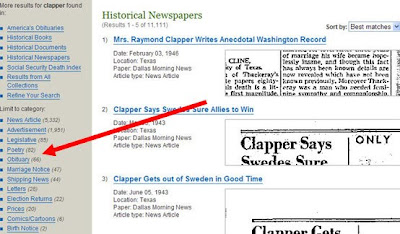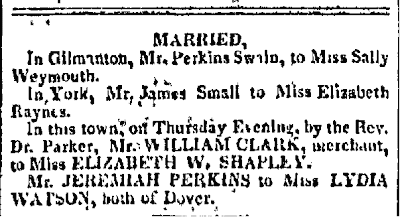Step 1. Start your search.







(Illustration: Wikipedia Commons) Documenting your family tree is a lot like putting up the family Christmas tree. You have the bare tree and now you need to look in the boxes of Christmas decorations and put up each one. It takes time to pick out and put the items in just the right place on the tree - but when you're done - wow - it always looks great.
Documenting your family tree is a lot like putting up the family Christmas tree. You have the bare tree and now you need to look in the boxes of Christmas decorations and put up each one. It takes time to pick out and put the items in just the right place on the tree - but when you're done - wow - it always looks great.
So - let's get started on putting together your "family tree".
What do you know about the family?
Who are you looking for?
For example - what are your grandparents or great-grandparent's names?
When and where were the born? When, where were they married?
So - you'll see who you are looking for and with the when/where of their birth, marriage and death - you can decide where in GenealogyBank will I be likely to find that information.
If they died in say, 1982 - then look in the Social Security Death Index and in the America's Obituaries section.
If they served in the Revolutionary War - then we'll look in the early newspapers for articles and in the Revolutionary War Grave Index in the "Historical Documents" section.
Tell me more about your family and we'll start researching in GenealogyBank to discover the original sources that document their lives. Taking the time to gather together the facts to document your family tree is worth it - just like it is to take the time to put together the family Christmas tree each year.
We can do this.
Tell me more.
Tom


 Notice that there is a Timothy Rafferty living on the same street, just a few houses down from them.
Notice that there is a Timothy Rafferty living on the same street, just a few houses down from them.  I am often asked: Do you have Canadian newspapers in GenealogyBank?
I am often asked: Do you have Canadian newspapers in GenealogyBank?  Here's a wedding announcement for Alexander James Ross of Winnipeg, Manitoba and Mary Moore McArthur of Picton, Nova Scotia - they were married in Chicago 6 March 1882. (Inter Ocean 14 March 1882).
Here's a wedding announcement for Alexander James Ross of Winnipeg, Manitoba and Mary Moore McArthur of Picton, Nova Scotia - they were married in Chicago 6 March 1882. (Inter Ocean 14 March 1882).  Nothing unusual here - just a typical day with a newspaper editor packing his paper with the information his readers wanted to read.
Nothing unusual here - just a typical day with a newspaper editor packing his paper with the information his readers wanted to read.
 When former slave John Wiley died in 1918 it was a banner headline and a front page story in the Belleville News Democrat (20 May 1918). Click here to read the article.
When former slave John Wiley died in 1918 it was a banner headline and a front page story in the Belleville News Democrat (20 May 1918). Click here to read the article. 2. Click on the State where the newspaper was published to find the titles and date ranges for your search area of interest.
2. Click on the State where the newspaper was published to find the titles and date ranges for your search area of interest. Let me know if this answers your question.
Let me know if this answers your question. 3. Use the drop down menu and select May 2009
3. Use the drop down menu and select May 2009 




Early Image of the Detroit House of Correction
 I picked one article/family at random just to see what I could find on this family.
I picked one article/family at random just to see what I could find on this family.  Here is the wedding announcement of Gorham Swain and Sophronia N. Ranlett. (Published 26 March 1825. Portsmouth (NH) Journal of Literature & Politics). Notice that in this article his surname is spelled Swaine.
Here is the wedding announcement of Gorham Swain and Sophronia N. Ranlett. (Published 26 March 1825. Portsmouth (NH) Journal of Literature & Politics). Notice that in this article his surname is spelled Swaine.  And here is the marriage of his brother Perkins Swain to Sally Weymouth. (Published 15 Jan 1823 - Portsmouth (NH) Journal of Literature & Politics.
And here is the marriage of his brother Perkins Swain to Sally Weymouth. (Published 15 Jan 1823 - Portsmouth (NH) Journal of Literature & Politics.  The next article I found was the sad news that Sally (Weymouth) Swain had died on 14 Jun 1834 and that although he was in his "usual" good health at her funeral, he died a few days later on 24 June. The article ends with the words: "They were carried to the grave by the same bearers". (Published 25 July 1834 - Baltimore (MD) Patriot).
The next article I found was the sad news that Sally (Weymouth) Swain had died on 14 Jun 1834 and that although he was in his "usual" good health at her funeral, he died a few days later on 24 June. The article ends with the words: "They were carried to the grave by the same bearers". (Published 25 July 1834 - Baltimore (MD) Patriot). 
